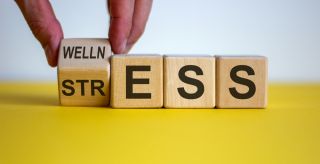Stress
Stress Thermometer: What It Is and How to Use It
The importance of having an early warning system before stress becomes a crisis.
Updated July 20, 2023 Reviewed by Ray Parker
Key points
- The stress thermometer is a way to monitor your overall stress level and communicate it with colleagues.
- The stress thermometer is divided into four colours; the optimal colours are green and yellow.
- The intervention with physician leaders was effective at preventing the escalation of burnout.

In a recent study of healthcare leaders, we tested a burnout recovery leadership training program. This intervention was designed to help leaders address their own burnout and teach them skills that have been shown to reduce burnout in employees (Dollard, M. F., and Bailey, T. (2021).
The results of this study are currently under review in a peer-reviewed journal but briefly, the study showed that the training was effective in preventing an escalation of leaders’ burnout. The training also had an impact on empathy and resting heart rate (an involuntary indicator of stress).
These were real-life results with physician leaders during the pandemic; we know it works in the most difficult of circumstances.
The Stress Thermometer
One of the skills we taught in that training program was the stress thermometer. In a previous post, we discussed the importance of monitoring one’s battery day-to-day. But we also need a way to continually monitor our overall level of stress. This is where we use the stress thermometer.
The stress thermometer can be divided up into different colours. At the bottom is green, then we go to yellow, then orange, and red at the top.
In the green is when all is well—maybe on vacation.
In the yellow, it is demanding but sustainable. Many of us are happiest in yellow. We want to do things that matter and take effort, but we need a version that is sustainable over time.
In the orange, it is demanding but unsustainable. We can go into orange for short periods of time, like when there is a known deadline that will end like a fiscal year. But we can’t continuously stay orange. If we do, we eventually get to red.
In red, there's a crisis. Our body and mind have told us enough. It’s screaming at us. In this state we are sick or unwell in some way: physical symptoms, health conditions, mental health symptoms, headaches, stomach problems, cancer, depression, anxiety. Now of course, if you have any of these conditions, it doesn’t mean that stress caused you to have these conditions. But we know that stress will make any health-mental health condition worse. Stress can also cause these conditions.
Answer the following questions:
- What does green look like for you in terms of your mind, body, and behaviour?
- What does yellow look like for you in terms of your mind, body, and behaviour?
- What does orange look like for you in terms of your mind, body, and behaviour?
- What does red look like for you in terms of your mind, body, and behaviour?
For example, I know I’m in orange when I start skipping the gym (behaviour), which is a recharging activity for me, and when I start feeling irritated with everyone (mind). I also start getting headaches (body).
It is a very interesting activity to ask your family members or close coworkers what they would say you are like in each of the stages. Remember to save this activity so you can refer back to it readily.
We want to use this stress thermometer as an early warning system so we don’t have to wait to get to red before we act. Monitoring changes in your recharging activities and behaviour is the best way to make sure you don’t end up in red.
It is also an easy and effective way to communicate stress levels to others in a non-judgmental way.
References
Dollard, M. F., & Bailey, T. (2021). Building psychosocial safety climate in turbulent times: The case of COVID-19. Journal of Applied Psychology, 106(7), 951.
Gilin, D., Maddux, W. W., Carpenter, J., & Galinsky, A. D. (2013). When to use your head and when to use your heart: The differential value of perspective-taking versus empathy in competitive interactions. Personality and Social Psychology Bulletin, 39(1), 3-16.
Nembhard, I. M & Edmondson, A. C. (2006). Making it safe: The effects of leader inclusiveness and professional status on psychological safety and improvement efforts in health care teams. Journal of Organizational Behavior, 27(7), 941-966.
Polk, K. L., Schoendorff, B. (2014). The ACT matrix: A new approach to building psychological flexibility across settings and populations. New Harbinger Publications.


